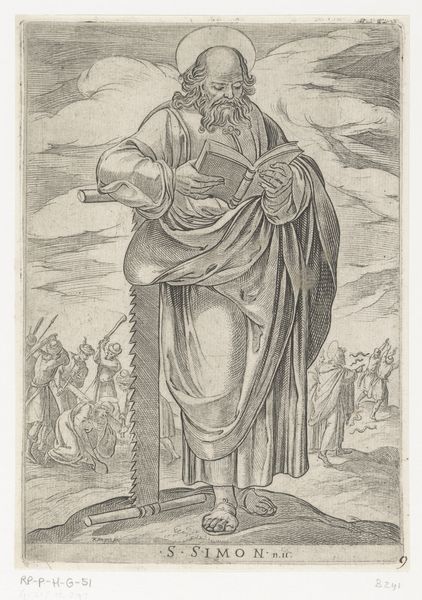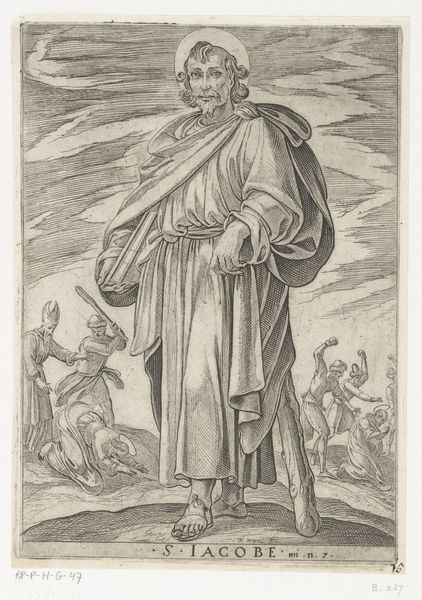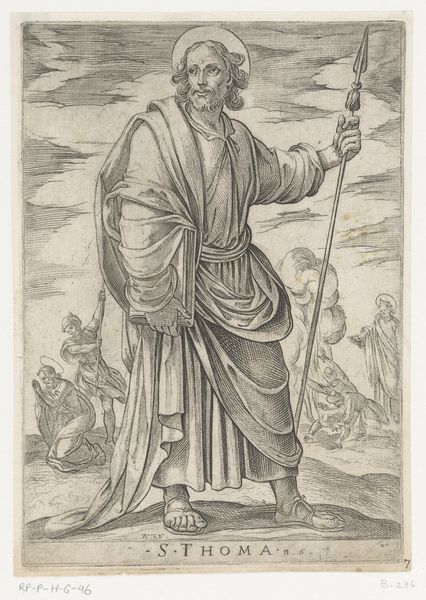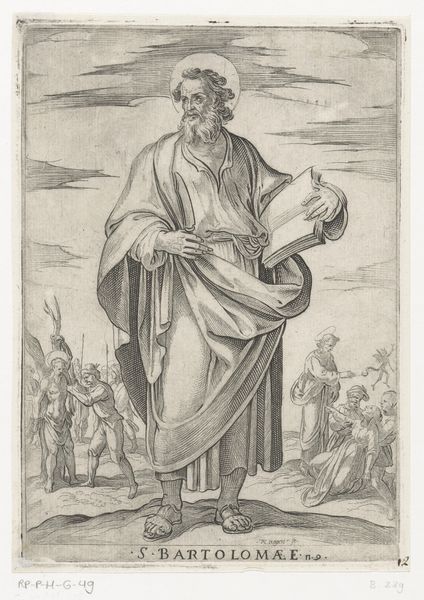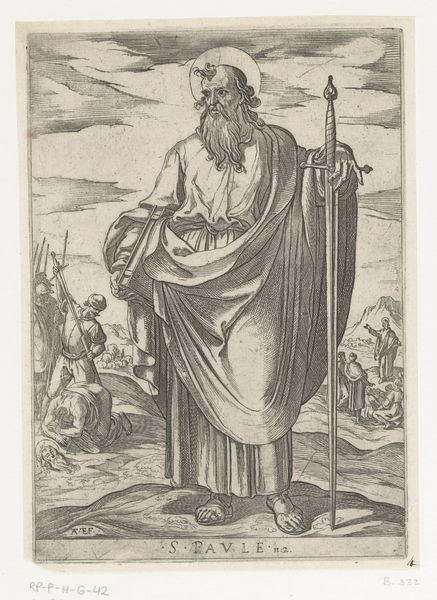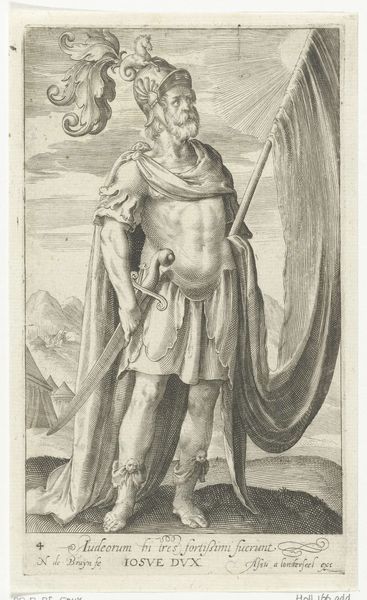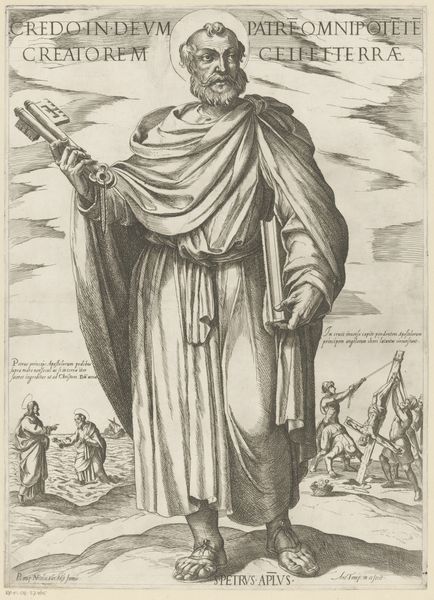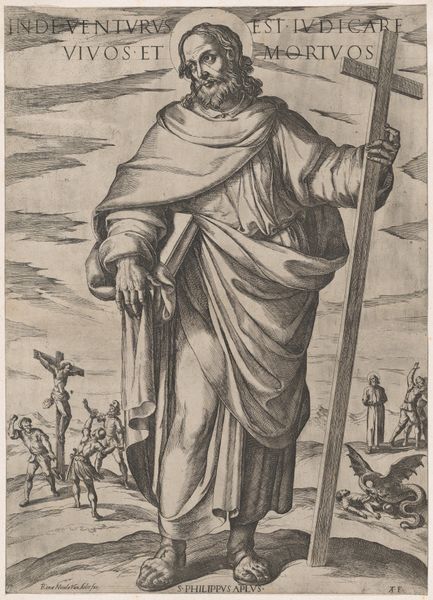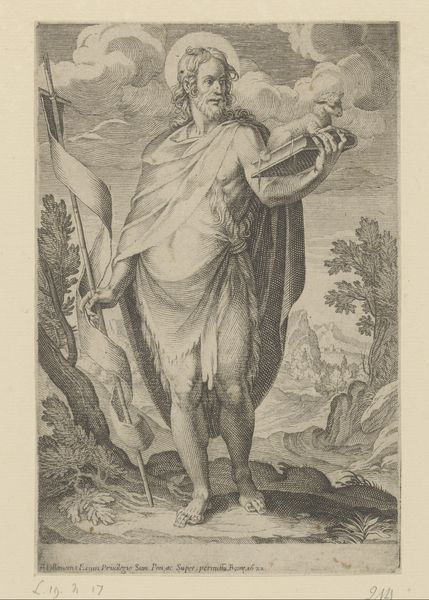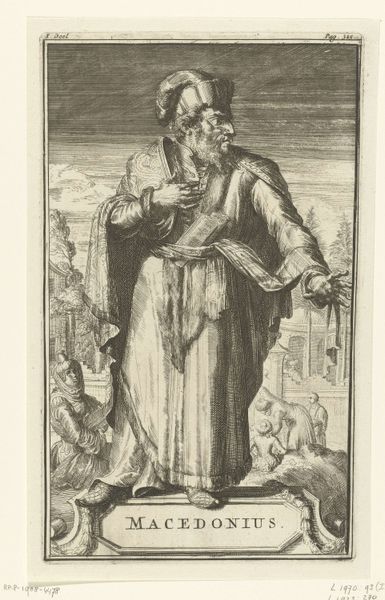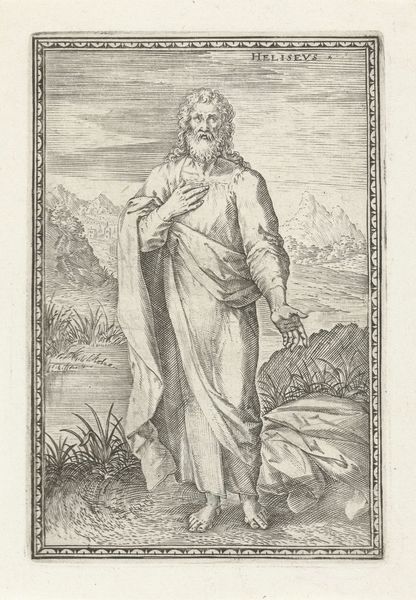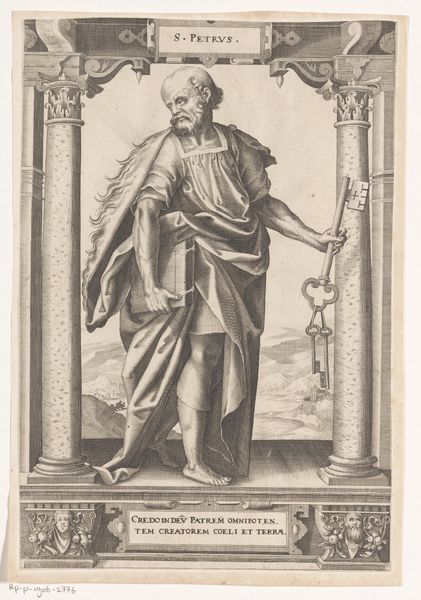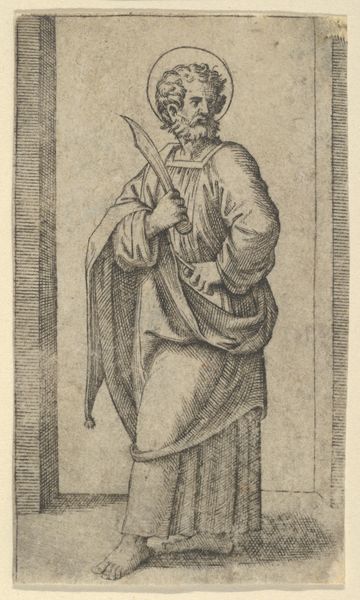
print, engraving
#
portrait
# print
#
figuration
#
history-painting
#
engraving
Dimensions: height 202 mm, width 143 mm
Copyright: Rijks Museum: Open Domain
Editor: So, this engraving, "De heilige Petrus," created sometime between 1565 and 1630 by Antonio Tempesta, is striking. The line work feels so deliberate. What do you see when you look at this print? Curator: Considering the materials—the copper plate, the ink, the paper—and the engraving process, it's vital to recognize this isn't just a portrait, but a manufactured object designed for dissemination. Look at how the marks build the form of St. Peter and his attributes – the book, the keys. The making is central to the work's meaning. Do you see evidence of mass production impacting the artistry itself? Editor: Well, the uniformity of the line weight suggests efficiency, maybe pointing toward the demands of producing multiples. Does that devalue the artistic skill? Curator: Not necessarily devalue, but re-contextualize it. The value shifts from unique artistic touch to skillful reproduction and accessibility. This was likely made to meet religious demand or reinforce certain ideologies through readily available images. Also, the materials available influence production values, changing what art meant to a society. What do you think about the way materials shaped its cultural meaning? Editor: That's fascinating. The accessibility allowed for widespread dissemination of this imagery. So it becomes about more than just the image itself, it's about its function and consumption in society. Thank you! Curator: Exactly! Considering the economic and social networks involved, the value lies in understanding the networks that create these objects and how they interact to serve and reinforce a range of social purposes. Now, seeing all of this changes your perception, right?
Comments
No comments
Be the first to comment and join the conversation on the ultimate creative platform.
